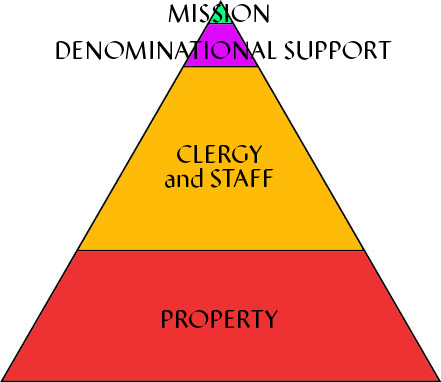What If the Idea of CHURCH were brand new?
Reinventing Church
Where to begin
What if the Church didn’t have 2000 years of history built on top of another few thousand years of tradition?
What if the Church had never spent the Middle Ages entrenched in monastic thinking, building cathedrals and chapels in every hamlet?
What if our ways of worship had never been written down—lost like the tunes that went with David’s psalms? What if the organ had never been invented?
What if the New World had never been discovered and there had been no outpost for the revolutionary religious thinkers of the 17th century to go?
What if we just decided to start over?
Redefining Church
So much of what the church is was carved in stone long, long ago.
The current decline of the church is a failure to adapt. We may think new thoughts but they get stuck in the web of tradition.
The only nod to modernity in the Church is music. It is a little odd to attend “contemporary” worship led by pastors wearing several layers of Medieval robes. The jive of the modern music is lost in absurdity.
There are so many spheres where Church needs a fresh look.
Updates are needed in:
- Architecture
- Education
- Worship
- Witness
- Mission
and most important, perhaps - Economics
Let’s start there.
Church Economics: A Fight for Survival
The modern Church is failing because the economics no longer work. Life in ministry as we once knew it is no longer sustainable.
Yet the economic structure of the Church is held in a fortress protected by those who consume Church wealth—not lavishly but expensively.
Therein lies a great dichotomy.
Our projected image divides our budgets like this.
All the talk is about mission.
We write mission statements. We do not budget for mission. Most church mission efforts revolve around volunteer effort.
The typical congregational budget looks more like this.
The bulk of church offerings go to sustaining buildings and church professional workers—just sustaining them. In theory, we are using these assets for mission. Statistics show that we are not doing this effectively.
If the Church were a business, it would undergo an emergency restructuring. The best leadership talent would be sought. No expense would be spared in implementing a new financial plan. Staff would be retrained. What isn’t working would be history.
But the Church doesn’t work that way. We work with what we have. We have tradition. At least for now.
In tough economic times, fewer resources go to mission. Those already in the church accept this. We love our buildings. We love our pastors. We are willing to keep filling the pot to sustain what we love.
The structure of Church requires that leadership come from a very shallow clergy pool whose primary training is not innovative management. Most clergy go into ministry to follow tradition—not lead. If they enter the ministry as young movers and shakers, they won’t last long! They will hit the long black wall.
But new people—the people for whom Church exists according to most mission statements—see a disconnect between what the church preaches and how the church prioritizes its assets and behavior.
They can’t justify the vast expense on things that aren’t working. They are not part of the failing tradition and we give them no incentive to join.
If the Chuch is to survive it cannot be the Church as we know it. Change will be painful because the change must be structural —starting with the top—where the dependence on the past is most deeply entrenched.
It is also where change is least likely to happen.
Church structure guarantees that.
Unless laity start to demand that their offerings be put to better use.
Part of church structure keeps the voice of laity silent.

![pyramid]2](http://2x2virtualchurch.com/wp-content/uploads/2014/02/pyramid2.jpg)
